
Converting a garden to no-till
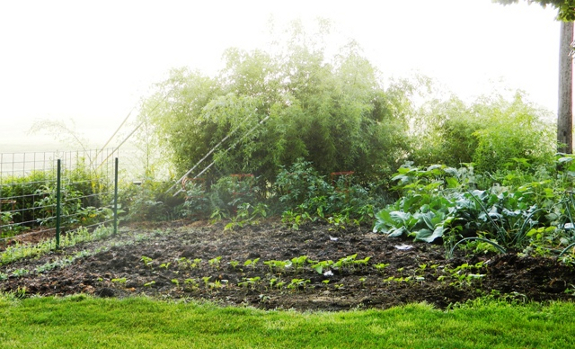
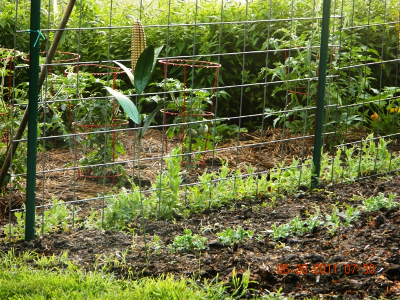 Mark's
step-mom, Jayne, decided to convert her garden to no-till.
Previously, she had used her mulching mower to shred tree leaves and
grass clippings from her lawn, then applied the organic matter to the
vegetable garden as a generous coating of mulch. However, she
also tilled the soil every spring and fall.
Mark's
step-mom, Jayne, decided to convert her garden to no-till.
Previously, she had used her mulching mower to shred tree leaves and
grass clippings from her lawn, then applied the organic matter to the
vegetable garden as a generous coating of mulch. However, she
also tilled the soil every spring and fall.
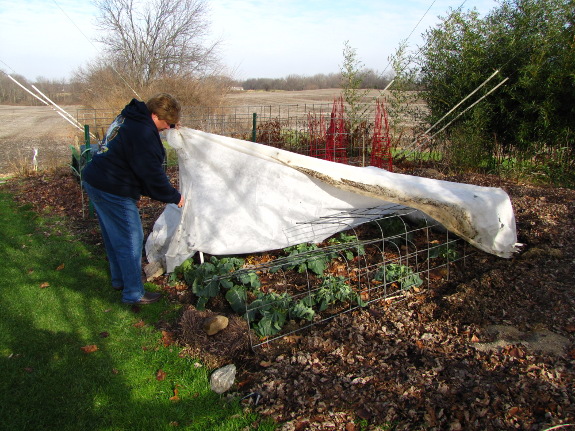
In fall 2010, Jayne
stopped tilling, but kept adding mulch. Come
spring, she simply pulled the mulch back from directly over top of her
seeds (or seedlings), then scooped the mulch back into place around the
plants once they were up and running. Despite using the same
amount of mulch as in previous years, Jayne reported that this
year's garden had far fewer weeds than earlier gardens had.
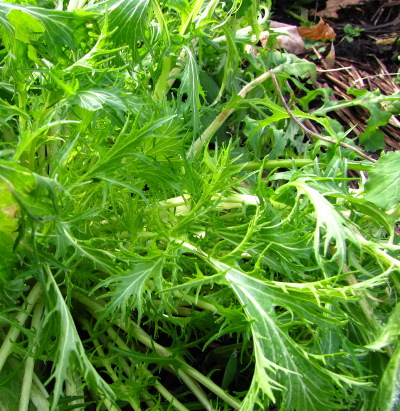 In
addition to deleting weeds, Jayne's heavy mulching campaign seems to
have created a warmer microclimate that has allowed her garden plants
to thrive deep into the winter. She lives in zone 5, at the edge
of a huge cornfield which lets the Midwestern wind whip through her
garden --- this is a much colder spot than my zone 6, windless
garden. And yet, Jayne had unprotected arugula and other salad
greens thriving on December 8. (In contrast, the salad greens I
didn't place under quick
hoops are already
two thirds dead.)
In
addition to deleting weeds, Jayne's heavy mulching campaign seems to
have created a warmer microclimate that has allowed her garden plants
to thrive deep into the winter. She lives in zone 5, at the edge
of a huge cornfield which lets the Midwestern wind whip through her
garden --- this is a much colder spot than my zone 6, windless
garden. And yet, Jayne had unprotected arugula and other salad
greens thriving on December 8. (In contrast, the salad greens I
didn't place under quick
hoops are already
two thirds dead.)
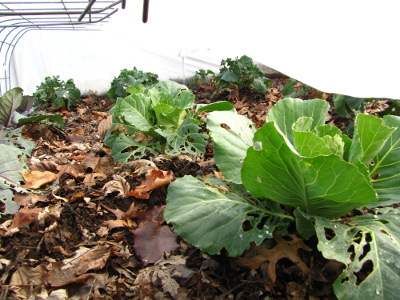
Under her row cover
fabric, Jayne's broccoli and cabbage were
thriving. We looked under the covers when outside temperatures
were in the low 20s, and there did seem to be some frost on the stems
of the broccoli, but the heads looked fine. Could the heavy
organic matter be helping these broccoli hang on?
Are you inspired to
change over to no-till next year? A good place to start is with
my Weedless
Gardening lunchtime
series.
Want more in-depth information? Browse through our books.
Or explore more posts by date or by subject.
About us: Anna Hess and Mark Hamilton spent over a decade living self-sufficiently in the mountains of Virginia before moving north to start over from scratch in the foothills of Ohio. They've experimented with permaculture, no-till gardening, trailersteading, home-based microbusinesses and much more, writing about their adventures in both blogs and books.
Want to be notified when new comments are posted on this page? Click on the RSS button after you add a comment to subscribe to the comment feed, or simply check the box beside "email replies to me" while writing your comment.

It was plowed with a big plow and it would be difficult to even walk across. I don't think we could even get a walk behind tiller to go through it, we will be using a tiller attachment behind a tractor to level it out so we can walk across it.
Should I plant grass in my walk ways or just mow the weeds when they eventually come up?
This reminds me of the documentary film "Back to Eden" which came out August 2011. The basic concept is similar -- heavy mulch and no till.
You can view the film online at http://backtoedenfilm.com.
I'm trying it out with a thick mulch of wood chips on one garden this year.
Heath --- I'd just mow what comes up. I suspect that garden aisles are a lot like pastures --- no matter what you plant, the things that will actually survive are the ones that can handle your soil type and mowing regimen.
Darryl --- I'm not sure I'd recommend a thick mulch of wood chips. Unles they're so composted you can't see many individual hunks of wood, that's going to be too high in nitrogen for your garden. Autumn leaves or straw are a better fit for vegetable garden mulches.